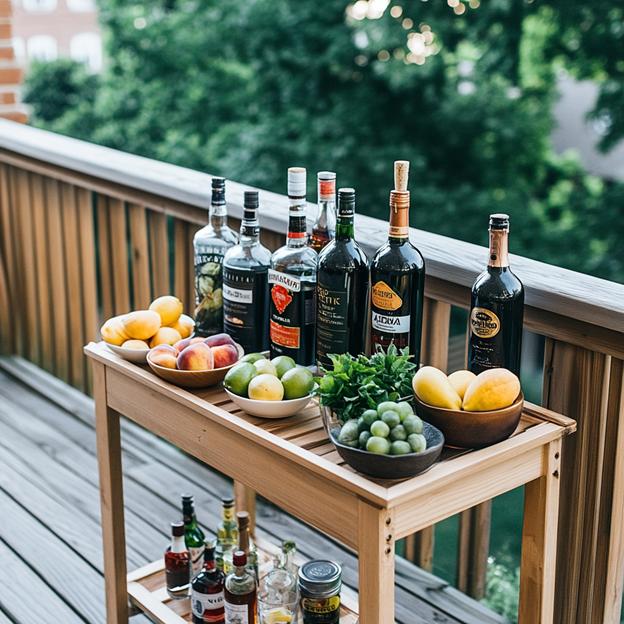From bars to kitchen fridges, sporting events to restaurants, in-flight drinks to weekend festivals, nights out to cooking recipes, beer is absolutely everywhere in our lives.
Whether you’re sticking to your home town or traveling across the world, it’s pretty clear that beer is one of humanity’s favorite drinks. Although the brewing method changes slightly across borders and periods of time, the truth is that anywhere you go in the world, you’re going to find beer one way or another.
This isn’t a new phenomenon, either. Beer isn’t only humanity’s favorite drink nowadays, but it’s accompanied humanity since we started recording history at all. From ancient civilizations to modern microbreweries, the history of beer is a long one that goes hand-in-hand with technological advances throughout human history. It’s a story both of science and of culture throughout the world.
Below we’ll map out the complete history of beer from Ancient Times to Present Day:
Ancient Beer Brewing
Brewing, or at least the fermentation part of it, is a natural process that is bound to happen under the right circumstances. It’s likely, in fact, that the first “beer” was “brewed” by accident—a very happy accident! For the same reason, it’s likely that there wasn’t a singular “first” beer.
Cereals containing sugars can spontaneously begin to ferment due to different yeasts present in the air. Because of this, it’s likely that multiple civilizations stumbled upon fermentation by accident after domesticating cereal.
So, how long ago did this start to happen? It’s hard to tell with much certainty. Sure, fermentation has been happening for as long as this combination of ingredients and circumstances have coexisted, but when did humans begin to trigger fermentation purposefully?
Chemical testing, along with other anthropological discoveries, have shed some light on this mystery. The earliest chemically-confirmed barley beer dates back to about 5,000 BC in Iran. Even before then, there is evidence among ancient Chinese artifacts that beer had been brewed from honey, hawthorns, grapes, and rice as early as 7,000 BC.
From there, we’ve seen plenty of other example of ancient civilizations brewing beer purposefully. In Mesopotamia, a region housing some of the oldest and most famous ancient civilizations, an ancient 6,000-year-old Sumerian tablet depicts multiple people drinking through straws from a bowl. This is thought to depict the consumption of beer, especially when juxtaposed with the 3,900-year-old Sumerian poem honoring Ninkasi, the goddess of brewing. This poem contains the oldest known surviving recipe of beer, specifically made from barley.
Other tablets from Mesopotamia seem to indicate that brewing was a skill or occupation mostly dominated by women, and that it was also a well-respected occupation, believed to come with divine protection from certain female deities. The process of brewing, in this case, seems to have involved a twice-baked bread, specifically bappir, which was baked for the sole purpose of brewing beer.
Beer quickly became an integral part of life for royalty and commoners alike. In Ancient Egypt, pharaohs consumed beer as part of their daily diets, and workers constructing the great pyramids were given multiple liters of beer as part of their daily rations, both for refreshment as well as nutrition.
This practice of brewing would persist throughout ancient civilizations and eventually to some not-so-ancient ones, specifically in Europe and in Asia.
Brewing in Europe
This custom of drinking beer throughout all the social classes persisted beyond ancient Mesopotamia, too. In Europe during the Middle Ages, this was customary as well. In fact, it was one of the most common drinks throughout Europe (especially in areas where wine was difficult to produce, but even so in areas where wine was produced with greater ease).
While the beverage often transcended social class, however, it wasn’t free of criticism. Scientists at the time discouraged its consumption, citing all the affects we know well today of being intoxicated, hungover and the rest. To be fair, the symptoms were likely elevated in those days, seeing as there were no FDA-like entities checking that these products were safe to consume.
In modern-day beers, hops are an essential ingredient that play a big role in both flavor and bitterness, the most stylistic components of the beer. Originally, however, hops weren’t a matter of flavor at all. Beer made without hops was often flavored with a variety of spices, but this hop-less beer would spoil quickly. The practice of making beer with hops was recorded as early as the 9th century, but took a bit longer to catch on. The proportions were difficult to get right, especially without the equipment we can count on in modern breweries. Nonetheless, beer produced with hops was some of the only beer that wouldn’t spoil too quickly, making it the first to be exported in some fashion. Another method of keeping beer from spoiling was to increase the alcohol content of the beer, but this method was costly.
By the 13th century, hopped beer had been perfected in certain towns. This allowed beer to be produced on a much larger scale and even prepared for exportation in larger quantities, starting in German towns and eventually finding its way to England.
In fact, it wasn’t until the 14th and 15th centuries that beer brewing went from a household production to a more artisanal one, birthing the very first brewpubs. Pubs were among the first “artisanal” breweries, brewing beer for mass consumption and inching closer to the large-scale production we know today.
By the 17th century, beer consumption per person had more than doubled from the century before. These advances were largely thanks to the incorporation of hops into the production of beer, but the use of hops in brewing was not universally popular at first. Certain purists insisted that ale be made using nothing but water, malt, and yeast. No spices, no hops. Eventually, and luckily for us today, this controversy gradually blew over and all beers became hopped to some extent.
Brewing in Asia
As in Europe, there is evidence that alcohol fermented from grains existed in Asia since at least 5,400 BC in what is now southern Iraq. This brewing was likely a byproduct of the preservation of excess grains rather than for consumption itself. This does not mean, however, that no beer of any kind was brewed purely for consumption! Evidence found in tombs suggests that these beverages were certainly brewed on purpose, but the brewing process using other grains was considered largely inefficient when compared to similar processes using rice. This, coupled with the fact that hops of any kind were practically unheard of throughout the region, made-malt based brews completely disappear over time. Rice became the prominent grain, which would come to birth what we know today as “rice wine” or sake.
Industrial Revolution
The Industrial Revolution made way to a great number of innovations over many industries. The beer industry was among them.
It’s pretty remarkable, really, that all the brewing throughout the world had been done thus far without any of the technology and precision that was born out of the Industrial Revolution. The steam engine along with other innovations such as the thermometer and hydrometer, for instance, changed brewing forever. With these tools, the production of beer could be taken from the existing tradition closer to a more exact science, moving it also into larger-scale industrial production.
Beyond the scale of production, these innovations helped fix some issues that brewers had been facing with flavoring their beer. Depending on the wood, charcoal, and straw used to dry the malt before these advances, early brewers were stuck with a smoky flavor to their beers. Although this might be a flavor profile some people are attracted to today, it was something that brewers at the time were trying to minimize. New heating methods made this possible.
The hydrometer also made it less expensive for brewers to brew the kind of beer they wanted. Before, beers were all brewed single malt. But with the hydrometer, brewers could produce light malts and brown malts for light beers and brown beers, etc.
Modern Brews
The history of beer is rich and diverse, going back thousands of years. What began as accidental cereal fermentation has since blossomed into a 200-billion-dollar transnational industry. Thanks to technological innovation and globalism, there are now hundreds of different ways to brew beer throughout the world.
Many European countries stay true to more traditional brewing techniques—just picture the ales coming out of England and Germany. Breweries in other countries like New Zealand have developed novel methods to create brews unique to their region. American breweries have done plenty of work to introduce some modern takes on otherwise traditional brewing methods, too. For instance, double IPAs, cream ales, and all sorts of other creations we enjoy today have little to do with the traditional, spontaneously fermenting ales.
These advancements have brought so much possible variation to beer brewing that a full guide on all of the different types of beers that exist today would be difficult to make! But that hasn’t kept us from trying. Check out our Ultimate Guide to the Different Styles of Beer to see how brewing styles have branched out across the world today.









